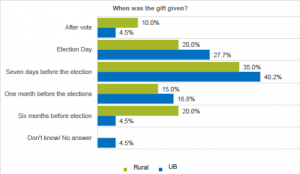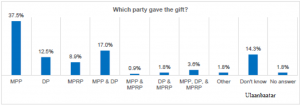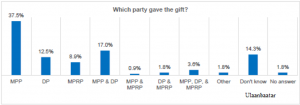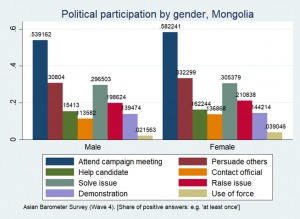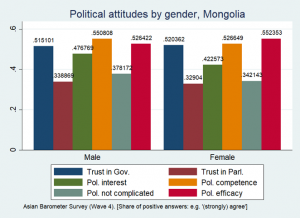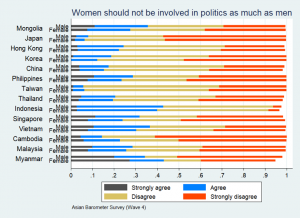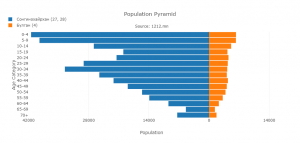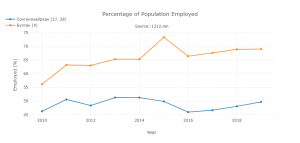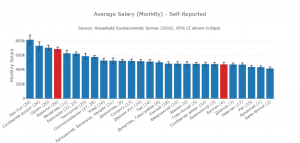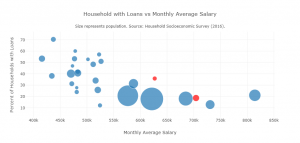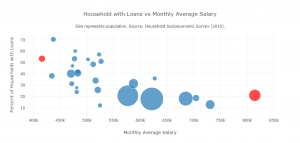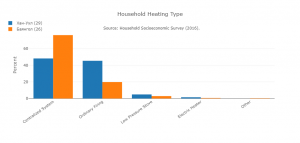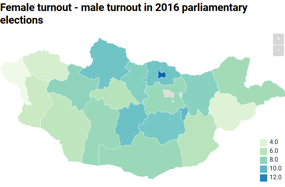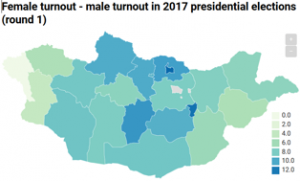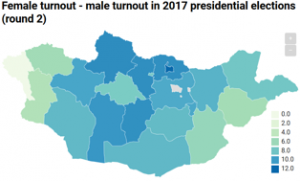By Johann Fuhrmann and Max Duckstein
Already a day after the elections some independent candidates began to call for a recounting of the ballots. In the following days, smaller parties and parts of the DP joined these demands. But irrespective of accusations about commas on live screens or single voters casting more than one vote there are big flaws in the current setup of the electoral system. To address these defects will be equally necessary and challenging. While some are rather rooted in the general setup of Mongolia’s power structures others could be changed by adjusting electoral laws and in particular party financing.
Multiple non-transferable vote
Under the current electoral system, a strong party structure and a known party brand bring the MPP (and to a lesser extent the DP) an advantage which results in the de facto exclusion of smaller parties and independent candidates. It can be expected that the roughly 220,000 members of the MPP give all of their (2 or 3) votes to “their” candidates. With around 2,000,000 eligible voters this already constitutes around 11 % of the votes. Acknowledging this, the party spent a part of its efforts before the elections trying to mobilize this core support group using their call centres and social networks. The DP is the only other party that can at least in theory somehow match these numbers with around 180,000 members. But the DP’s structure is nowhere as rigid and as effective and thus (right now) failing to mobilize their core group in a similar manner. Nonetheless, these numbers exemplify the starting advantage of the major parties during elections. Whilst this is natural to any party democracy, it creates a block to new political forces under the current electoral system.
Given the ruling party’s popularity, more than a third of non-member voters selected MPP-candidates on their ballot. But even voters who intended to cast their votes for an independent or small party candidate were faced with a difficult choice: Their remaining one or two votes needed to be cast as well for their vote to be valid. Unless they hold a particular grudge against the two big parties a significant part of them also chose candidates from MPP or DP, especially since available party funds and a more centralized network provided most of their candidates with opportunities to make themselves known among their electorate. But even if voters conspicuously tried to avoid voting for these candidates their votes were split between different smaller parties and independent candidates. An alliance consisting of 42 independent candidates admittedly managed to pass an election program. But similarly to the four party coalitions, their brand recognition remained low especially among the majority of the population which is not actively engaged in politics. This became especially difficult after the enlargement of the voting districts. Larger voting districts naturally require candidates to run bigger, more expensive campaigns. Personally meeting voters and speaking to them likewise became more difficult, even more so under COVID-19 restrictions. Both developments favour again parties with an existing broad member base, centralized networks, and large funds. The limiting of election campaigning to only three weeks ahead of the balloting only intensified these limitations.
However, effective party structures also exist in other countries. But while receiving a majority of the votes should obviously result in getting the most seats in parliament it should not result in denying access to most other candidates. The extent of the discrepancy between the share of MPP votes (44,8 %) and the seats in parliament (81,6 %) is higher even than in most first-past-the-post voting systems. This is especially concerning since it is becoming more and more imprecise to call Mongolia a two-party system by popular demand: In these elections around 30 % of the electorate voted for a candidate not affiliated with either of the two big parties. While a certain misrepresentation of the DP in parliament is concerning (24,5 % of the votes vs. 14,5 % of the seats), the lack of representation of smaller parties and independent candidates is unsettling. An electoral system not representing these 600.000 voters may lose popular legitimacy in the long run. Although a ruling of the constitutional court in 2016 clarified that proportional representation is not in accord with the Mongolian constitution, finding a way to democratically represent the growing part of the constituency which is not satisfied with the status quo has to be a priority.
Party financing
One element in securing a fairer and more competitive democratic environment would be to create stable funding for smaller parties. Although there currently is a public subsidy for party financing, it remains relatively minuscule compared to actual campaign spending. Only parties who win a seat in parliament are eligible for the meager singular payment of MNT1,000 per vote. Per obtained seat, each party gains MNT10 million additionally per year. While this might sound high at first glance, it only adds up to €1m for the current electoral cycle even in the case of the MPP. Campaigns can cost up to hundreds of thousands of Euros per candidate. This already places the seed for manipulation and corruption into the electoral system. Understandably, attempts to reallocate parts of the state budget to the two major parties are usually met with great suspicion. Not sufficiently subsidizing parties altogether might be more damaging for the Mongolian democracy in the end. Currently, competing for political office is not just the expression of active citizenship but it poses a serious economic risk and inevitably becomes an economic investment. Offering bigger state subsidies to smaller parties as well as the two major parties and enabling them to actively participate in shaping the political landscape without being mainly financed by private capital should constitute a legitimate designation for reforming the current system. That this must be accompanied by strict supervision and rigorous auditing should be obvious. Unfortunately, the overwhelming dominance of the MPP in parliament provides little incentive for the government to implement a party finance law that would ultimately profit their political rivals. The last attempt by a presidential working group consisting of political scientists and law scholars led by the experts Gerelt-Od, Uurtsaikh, and Chuluunbileg submitted its proposal for a reformed political parties law in 2016. This included a section on public subsidies for parties, which was based on German law. Unfortunately, the parliament did not discuss the outline.
Media ownership
Closely connected to party finance is the worrying issue of media ownership. A large majority of media outlets are directly connected to the major parties through their owners. While the MPP is affiliated to the plurality of them, the issue of often-murky ownership is a more general one. Whereas the political domination of media outlets is in itself a concern, the lack of a clear and transparent ownership structure contributes to the often-unclear role the extensive, already hard to navigate media landscape plays in political conflicts. Although the situation has worsened over the last years, the Mongolian Press Institute and the MOM-project do great work on mapping the ownership and interest networks behind Mongolia’s biggest outlets (e.g. http://mongolia.mom-rsf.org/fileadmin/rogmom/output/mongolia.mom-rsf.org/mongolia.mom-rsf.org-en.pdf).
A system in need of structural change
None of these problems will be solved overnight. But they must be addressed for Mongolian democracy to stay resilient and vibrant. While the constitution limits the possibilities of representative democracy, a way must be found to include the growing numbers of voters choosing alternatives to the two major parties in the political process. Despite current public sentiment, stable and fair party finance will be a cornerstone for this endeavour. Lastly, the politicized ownership structures of media outlets constitute a further challenge to a functioning and active exchange over new ideas in the political arena. However, in the current political environment, extensive structural reforms seem unlikely. In times of a lurking economic crisis, it seems unlikely that these issues will become a priority on the political agenda during coming months.
About Johann Fuhrmann and Max Duckstein
Johann Fuhrmann heads the office of the Konrad-Adenauer-Foundation in Mongolia. Prior to that, he was Head of Growth and Innovation at the Economic Council (Wirtschaftsrat der CDU). As a scholarship holder of the German Academic Scholarship Foundation he obtained his Master’s degree (MSc.) in International Relations at the London School of Economics.
Max Duckstein is Senior Policy Analyst at the Konrad-Adenauer-Foundation’s office in Mongolia. He obtained his Master’s degree (M.A.) in Sociology at Bielefeld University. As a scholarship holder of the German Academic Exchange Service (DAAD) he spent a semester in Russia as visiting researcher at Saint Petersburg State University.

 Follow
Follow